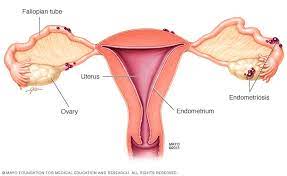Today, a significant stride in the fight against endometriosis was made with the publication of a new expert consensus statement by the Society of Radiologists in Ultrasound (SRU) in the journal Radiology. This statement, aimed at revolutionizing the evaluation of endometriosis, offers recommendations to augment routine pelvic ultrasounds and enhance the diagnosis of deep endometriosis.
Endometriosis, a prevalent condition characterized by the presence of endometrium-like tissue outside the uterus, often leads to debilitating symptoms such as chronic pelvic pain and infertility. Unfortunately, diagnostic delays are common, leaving patients to endure prolonged suffering and negative impacts on their quality of life.
The consensus statement addresses this pressing issue by providing guidelines to improve the screening process for endometriosis, particularly deep endometriosis, which extends beneath the peritoneal surface and represents the most severe form of the condition.
Dr. Scott W. Young, the first author of the statement and a diagnostic radiology consultant at the Mayo Clinic, emphasized the importance of these recommendations in increasing the diagnostic sensitivity for endometriosis on pelvic ultrasound. The panel, consisting of multidisciplinary experts, including radiologists, sonographers, gynecologists, and surgeons, employed a comprehensive literature review and a modified Delphi technique to reach a consensus.
Key recommendations include performing transvaginal ultrasound of the posterior compartment, observing the relative positioning of the uterus and ovaries, and implementing the uterine sliding sign maneuver. These techniques aim to enhance the detection of endometriosis while minimizing additional time during imaging.
The consensus statement also introduces a grading and reporting system for endometriosis observations on ultrasound, categorizing findings as Incomplete, Normal, Equivocal, or Positive, with associated management recommendations.
Dr. Young underscored the significance of these guidelines in reducing diagnostic delays and improving patient outcomes. He noted that while these recommendations target symptomatic patients at typical risk for endometriosis, individuals at high risk may require advanced imaging techniques for accurate diagnosis.
The authors acknowledge the need for validation studies to assess the accuracy and efficacy of augmented pelvic ultrasound in clinical practice. Nevertheless, this expert consensus statement represents a significant step forward in the battle against endometriosis, offering hope for earlier diagnosis and improved management of this debilitating condition.









